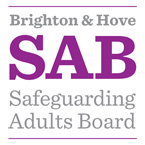Cuckooing
What is Cuckooing?
Cuckooing is a process whereby criminal gangs target vulnerable people in order to use their homes to deal drugs from. Cuckooing allows criminals to work from a property rather than the street because it is out of sight from the police and therefore less risky to them. This is difficult for the police to monitor because they often will only stay for a short period of time. Drugs, money, and weapons may also be stored at the property. Children and young people – sometimes who have gone missing from home or care – have been found in “cuckooed” properties.
The vulnerable people in the cuckooed property are often coerced into allowing their property to be used for this purpose through the offer of ‘free’ drugs and threats of violence. Once a gang has gained control of the property, the cuckooed person may then be forced to deal drugs in order to pay off the free drugs they were initially given. This is known as ‘debt bondage’.
Gangs may also use accommodation in rural areas. This can include serviced apartments, holiday lets, budget hotels and caravan parks.
‘Cuckooing’ continues to be a problem in Brighton and Hove, putting vulnerable people at risk of harm.
Who is at Risk?
Children and other vulnerable adults are often used as drug runners. This significantly increases the risk of criminal and / or sexual exploitation and increased violence. We consider this form of exploitation to be modern slavery.
Some vulnerable adults have been forced to leave their homes, which can lead to homelessness. This also leaves the gangs free to sell drugs in their absence.
Drug users and adults with other vulnerabilities such as mental health issues and learning difficulties are particularly vulnerable to being cuckooed. They may often be reluctant to raise concerns for fear of repercussions or violence.
Signs or Indicators of Cuckooing
- An increase in the number of visitors to the property through the day and night, often visiting for only short periods of time.
- An increased number of vehicles visiting the property including pedal cycles, taxis, or hire cars.
- The usual occupier of the property having new people staying at the property including extra bags of clothing bedding in the property.
- Evidence of drug use and drug litter such as discarded syringes, foil, and cling film in and around the property and evidence of drug dealing such as scales and deal bags.
- The increase in local crime and anti-social behaviour, including the accumulation and storage of stolen pedal cycles.
- A sudden decrease in support workers and other professionals visiting the address. Victims of cuckooing may disengage with support services and be unwilling to discuss what is happening at their property when the subject is raised with them.
- The usual occupier of the property having new people staying at the property including extra bags of clothing [or] bedding in the property.
Responding to Cuckooing
If you think that cuckooing may be taking place Brighton & Hove City Council and Sussex Police have implemented a multi-agency response.
Any person who is concerned that a property has been cuckooed should report it via 101 or 999 as appropriate or via online on Sussex Police website Report | Sussex Police click on report a crime and follow the appropriate links.
The information that is required is:
- Address of the property
- Names and dates of birth of usual occupants of the property
- Any known vulnerabilities of the usual occupants
- Description of the concerning behaviour including dates and times
- Description of any visitors to the property including names and other details if known
- Registration / description of any suspicious vehicles
Sussex Police will coordinate an immediate multi-agency response with agencies working together to ensure that people are safeguarded, and appropriate enforcement action is taken against offenders.
This is a leaflet that can be printed out that explains what cuckooing is, signs of cuckooing, and how it can be reported.
Cuckooing LeafletThis is a poster that can be printed out that explains what cuckooing is, signs of cuckooing, and how it can be reported.
Cuckooing Poster